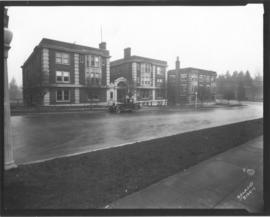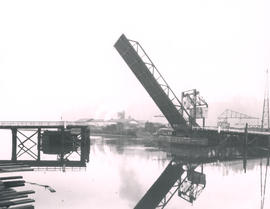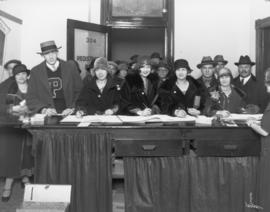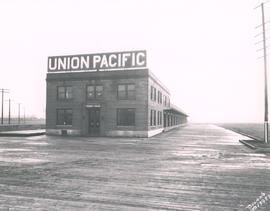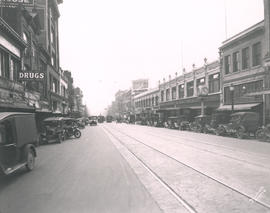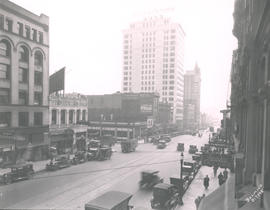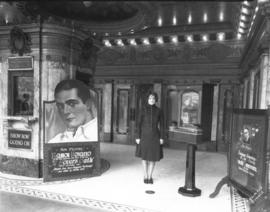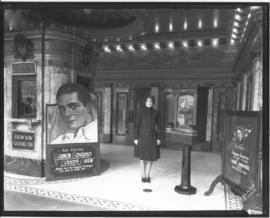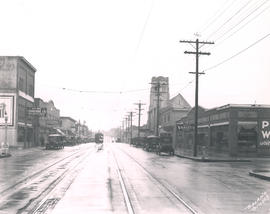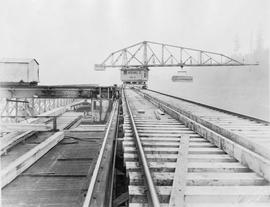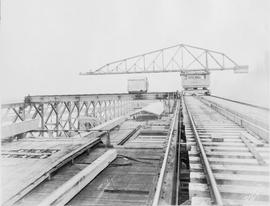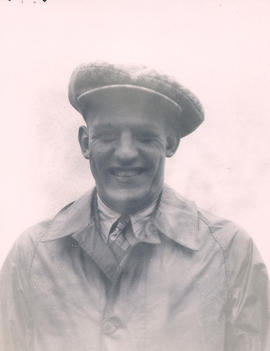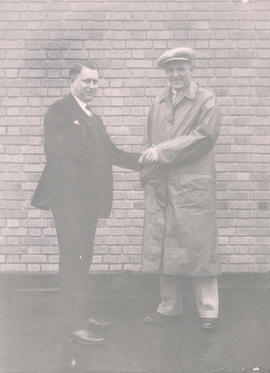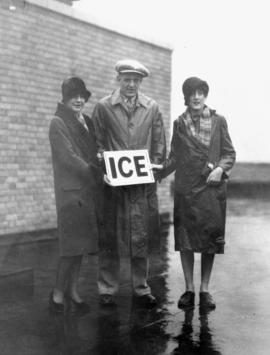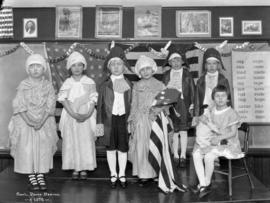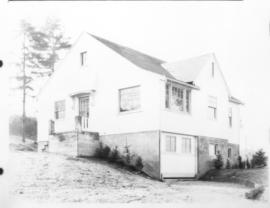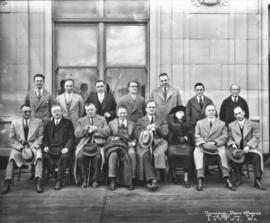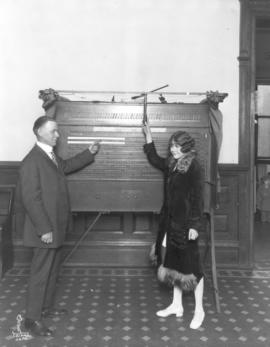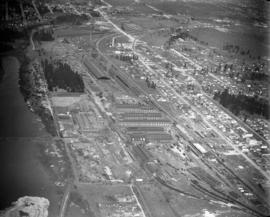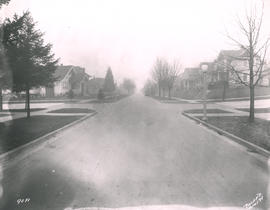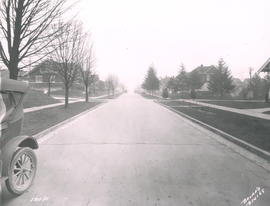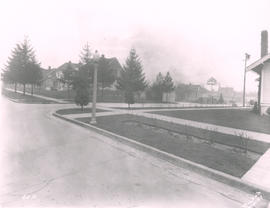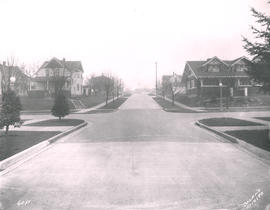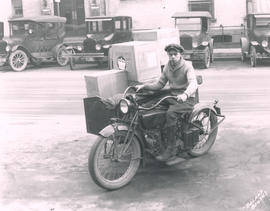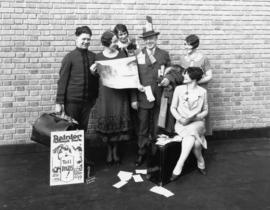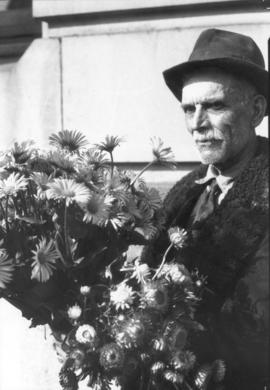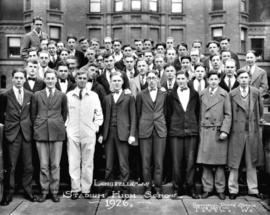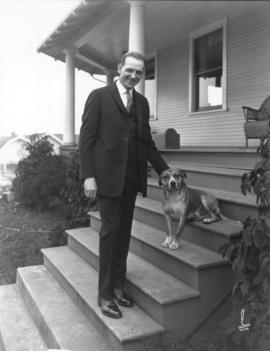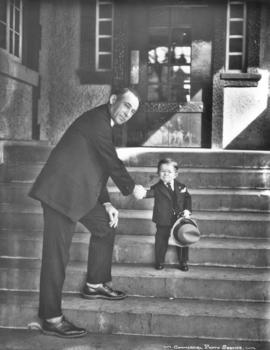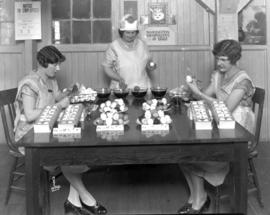In 1926, silent films still ruled the screens and Tacoma had over 25 moving picture theaters. It also had its own theater association, the Picture Theater Managers' Association of Tacoma. In February of that year the group posed for a picture after one of their meetings at the Hotel Winthrop. Pictured seated (left to right) are: James Hone, L.A. Drinkwine- owner of the Palace Theater, Walter McNeish- Bijou Theater, Robert McKinnell- Rose Theater, Ned Edris- Blue Mouse, Mrs. DeSilva-Lyric Theater, W.Flint- The Park, and Martin Steffen - The Rex. Standing (left to right) are: M. McIntosh and R. Minkler- Lincoln Th., Louie Peorunko- Sunset Th., R.R. Pratch- Realart, Jean Spear - Capitol, J.R. Pottor- Community Th and H.R. Berg- Shell Th. Most noticeably missing is H.T. Moore of Moore Amusement, the owner of the Rialto. (WSHS) (TNT 2/5/1926, pg. 8)
Group portraits--Tacoma--1920-1930; Picture Theater Managers' Association of Tacoma (Tacoma); Hotel Winthrop (Tacoma); Motion picture industry--Tacoma--1920-1930; Motion picture theaters--Tacoma;
